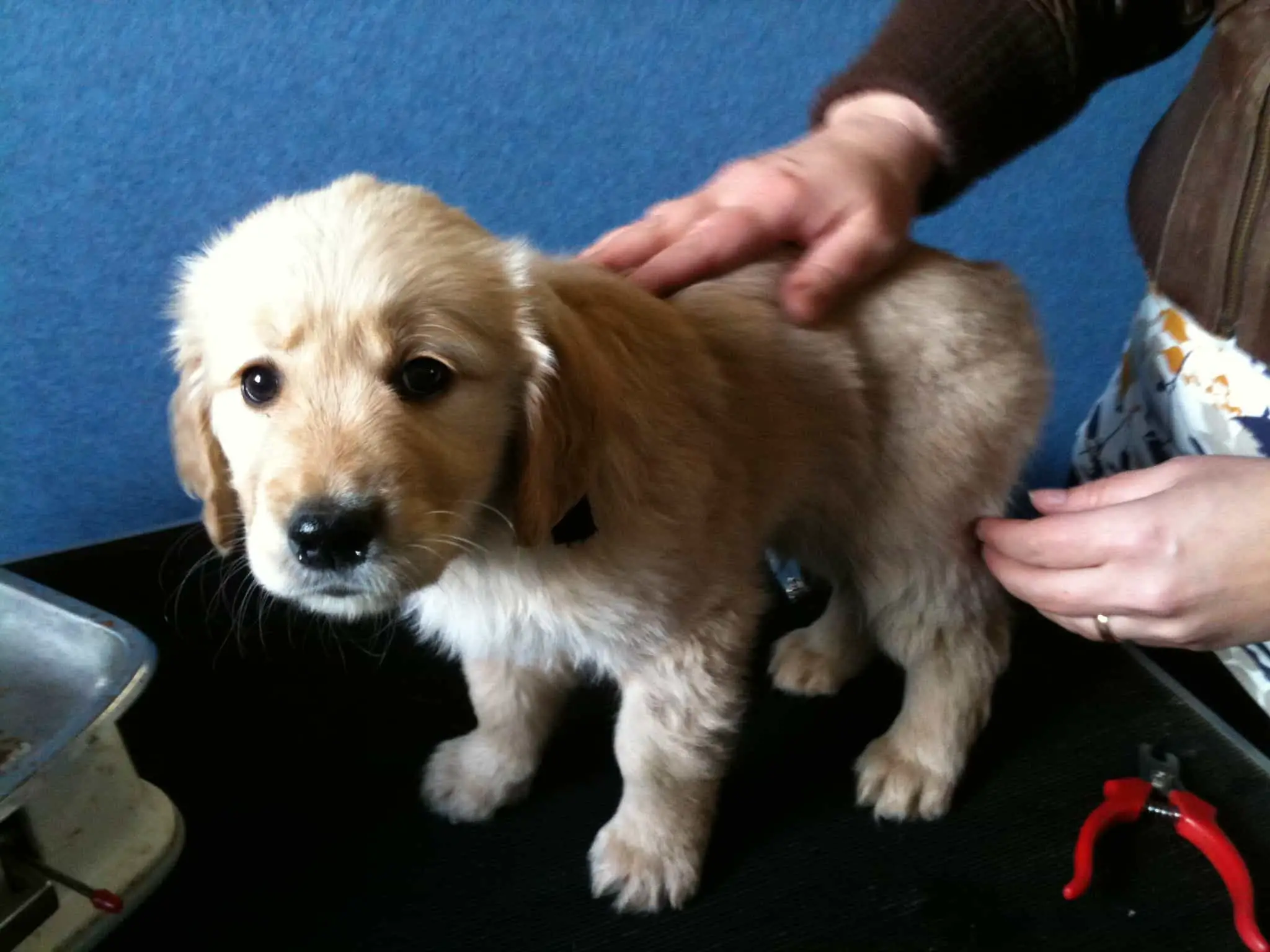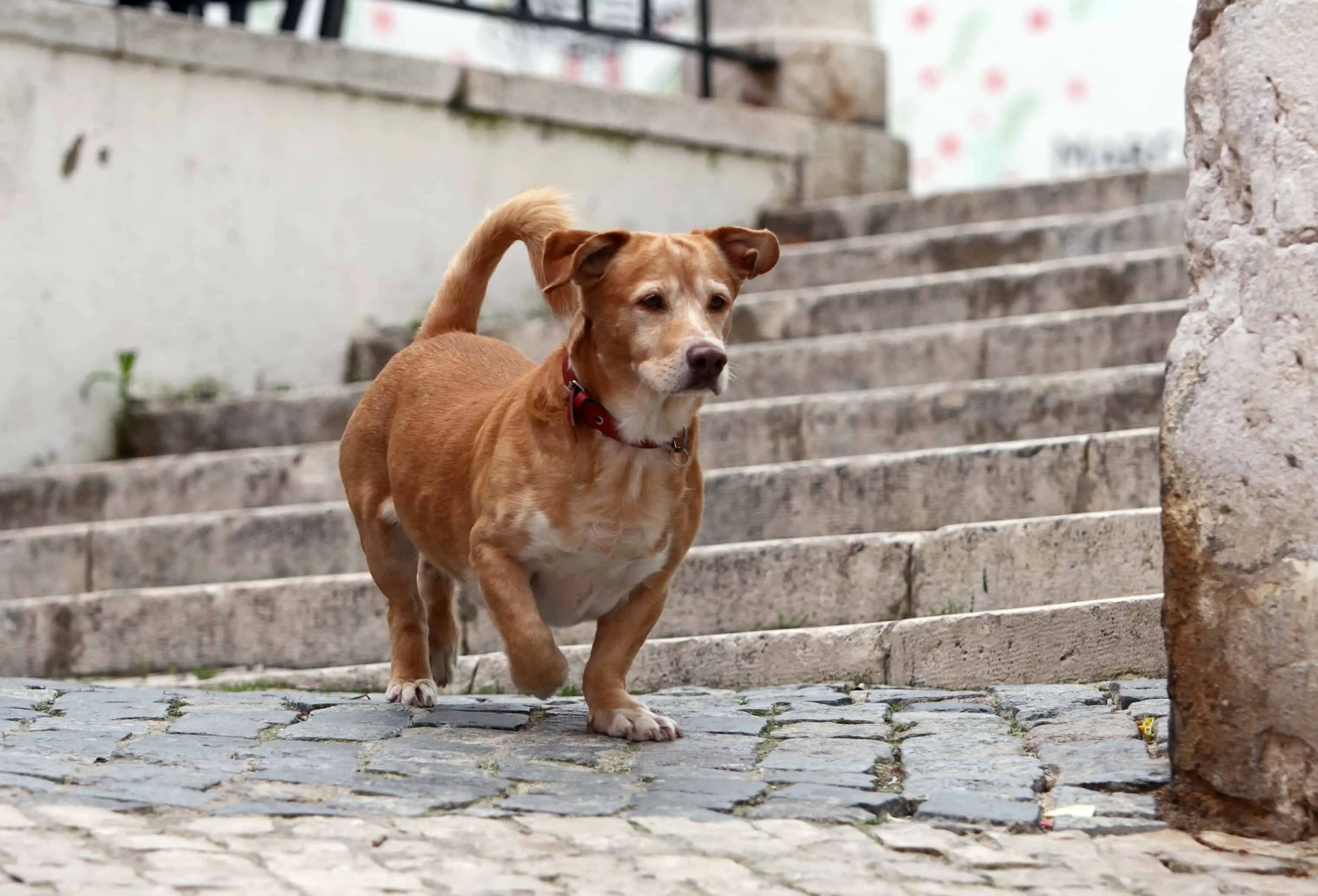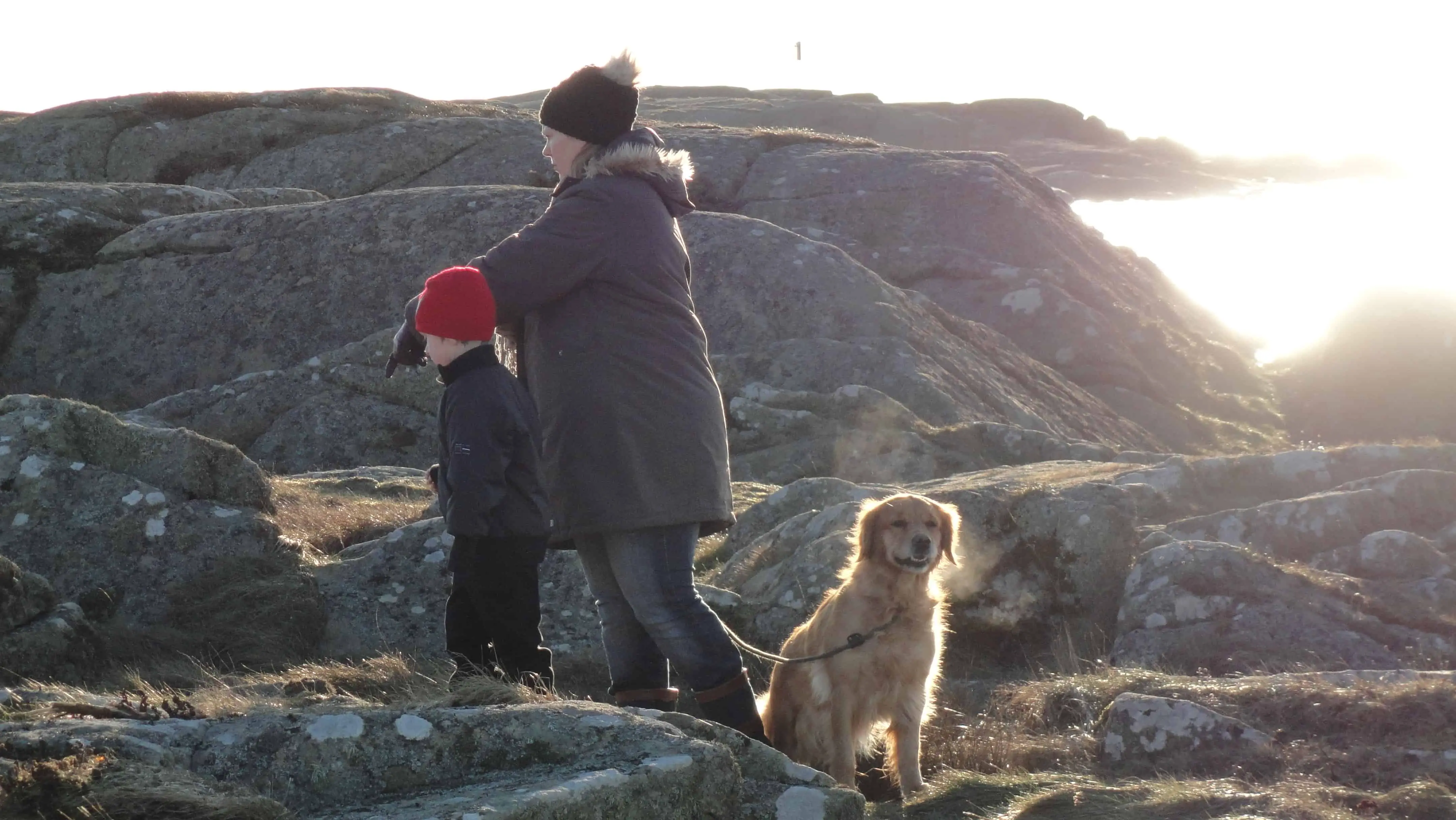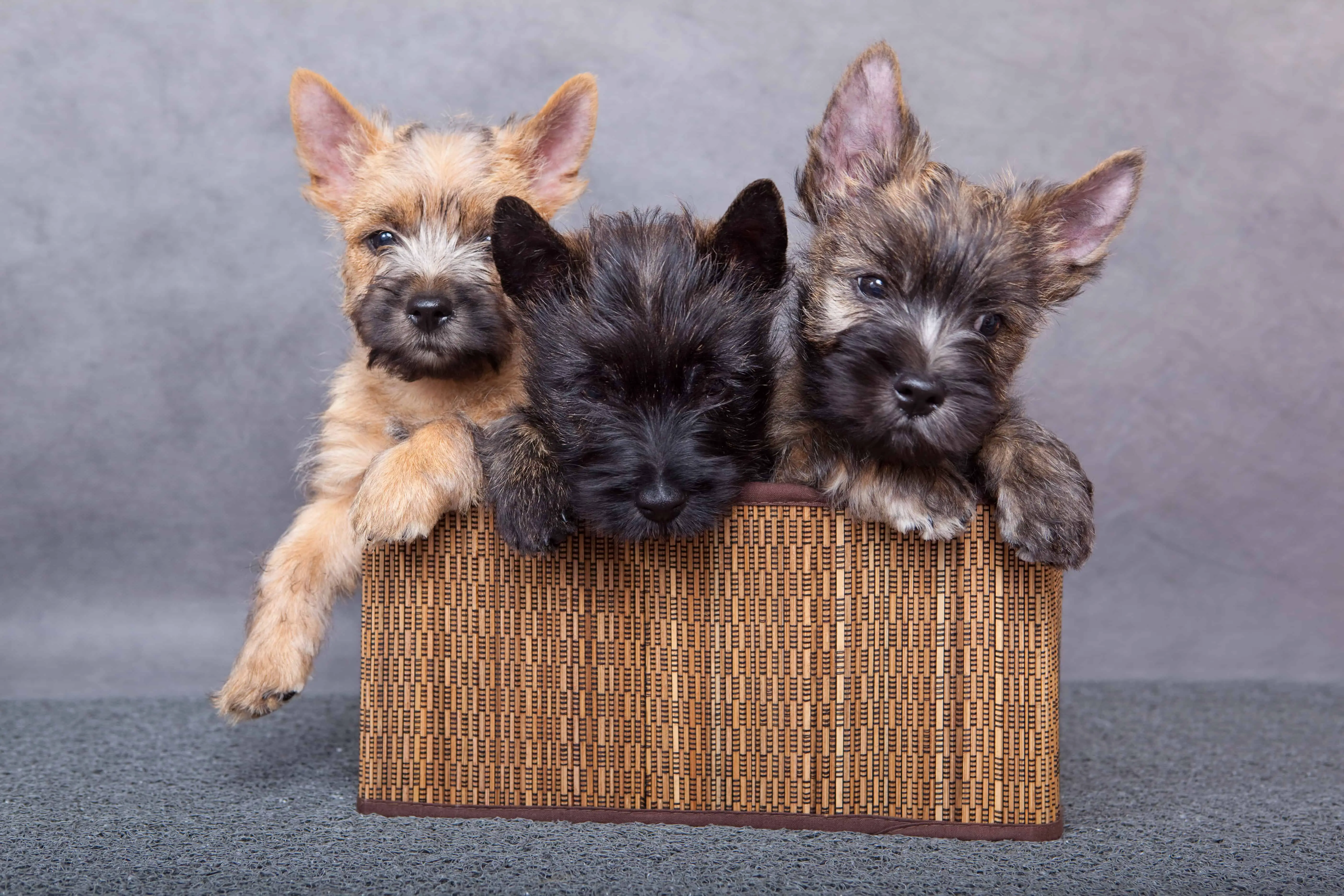We raised our puppy Aurora in Gothenburg, Sweden. She is just adorable.
Tennis court trick
I love this trick, because it’s kind of obvious when you think about it. Puppies can be really sensitive to movement and noise in the first 6 months, I try to find places for training that are secluded from other people, dogs, traffic, you name it. Anything that can be a distraction for your pup.
Now depending on where you live, it is highly likely that there is a nearby outside tennis court that is fenced. This perfect for you and your pup as you start training. It provides an enclosed outside area for you to train in, free of people and other moving stuff!
Now it is given that the tennis court might be used during certain times, especially during the summer months. Keep in mind that any enclosed court works just as well. I have trained Aurora on a Basketball court many times, works like a charm!
Walk at odd times
”Oh it’s lunch time and it’s sunny for the first time since Tuesday, let’s walk our puppy in the park!”. Now hold on for just a minute. This is a common mistake and it sounds like a great idea at first. But, I can assure you that this will only hurt the training of your dog in the long run.
Taking your untrained pup to a fully packed park is not a good idea. Dog owners think alike and the park is therefore likely to be full of dogs when the weather is good, and you want to avoid contact with other dogs initially.
Moreover, many people run home during lunch break to walk their dogs. Try recognizing the hours when there are most people out walking their dogs, and then try doing the opposite. This can be very difficult depending on your schedule, but your puppy will be thankful.
I usually walk our dogs late in the evenings, in the hours between lunch and people leaving work (4-5 p.m) and sometime in the morning. Either really early in the morning or after most people have gone (9-10 a.m). Having a calm environment makes training your puppy about half as challenging as otherwise.
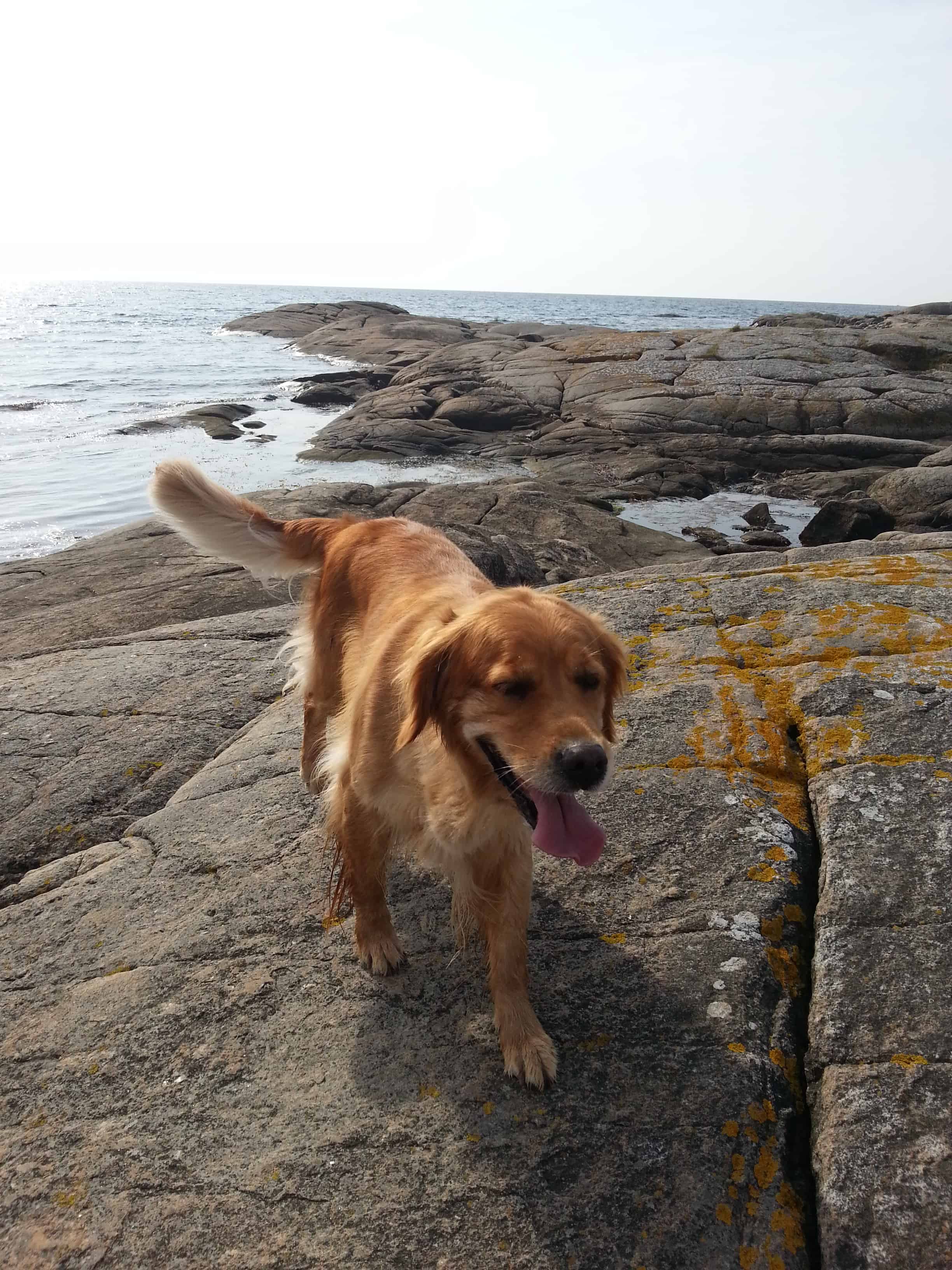
Our Ella definitely prefers the sea side over the city
”The Sit trick”
This is also a great trick that has helped us a lot when we lived in the city. So this is basically what I do:
I having my pup sit any time we pass a person or dog. This has helped us a ton. It’s a strong foundation for us and helps him rely on his nose instead of eyes when it comes to stimuli. He has a tendency to get a little anxious in busy places so it’s been super helpful to build that habit. It also helps him calm down when he gets all worked up.
I usually combine “sit” and “focus” to keep his attention on you instead of the distraction. Almost everything we do is impulse control work, but I’d think if he can focus enough to sit then you can work on keeping his attention.
I’ve found that it helps to give her frequent directional commands and treats while walking. It’s easier for her to focus on “heel” then “mush” then “gee” then “woah” than on just walking nicely. You can also use sledding commands you want to do joring work with yours in the future. Plus, it helps her build up a tolerance for remaining focused on the owner.
The Driveway Trick
Sit in your driveway or whatever the equivalent is for you. Give him the length of his leash and otherwise ignore him – don’t stare, heck read a book. When he comes up to you, mark and reward. If he continues offering engagement, reward, and ask for a command (easy one – sit, down or touch). Release him to ”go sniff” and sort of gesture to an area you think he’ll enjoy. Rinse and repeat. As the engagement increases, you can ask for more things. Then go to the next area and start again. The point is to make the area get boring after while and reward the crap out of engagement.
Dynamic Games and Remade Fishing Poles
This is like two tricks in one. Play training games that are dynamic – throw food in a bowl, and pull back to a ‘start’ line, race him there, and then race away and ask him to ‘thru’ (through your legs) (you’re getting engagement, recall, and a thru in there). Try using a flirt pole (gets you leave it, drop it, get it and sit or down).
A flirt pole, also called a “flirt stick”, is a piece of exercise equipment for dogs that entices a dog to chase a fast moving lure. This equipment is often used to physically condition a dog and improve his or her skills for better performance in certain competitions such as lure-coursing or Schutzhund. It is often used simply to get a dog to exert a lot of energy in a small space.
I use an ugly stick fishing pole with a line with the drag set, then puncture a tennis ball and tie it on the end. It’s my dogs favorite game. “Wanna Go Fishing?”
A flirt pole is otherwise constructed of a long stick or pole made of light wood like bamboo or light plastic like PVC with a long rope with a string attached at one end. Attached to the other end of the rope is a lure such as a dog toy, a hide, a rag or an other item depending on your exercise goal.
The pole is typically 3-5 feet long with the rope being about the same length. The construction is similar to that of a fishing pole.
So what I usually do Is I hold the pole and through a variety of motions move the rope and the lure. The idea is to move the lure so that the dog cannot catch it easily, i.e to flirt with the dog. I generally stand in one place while working the pole to make the lure active, or moving. You can stand in one spot and rotate to swing the pole around and the circle will pause to move quicker and in wider circles.
Swinging and dragging the lure along the ground will create the effect of the animal running and the object escaping. In turn, the dog will want to chase the lure. Snapping, quickly jerking or flapping causes the pole to quickly change direction. Jerking or swinging the pole higher so that the lure is in the air entices the dog to jump or attempting to catch the object. To prevent the dog from catching the lure easily, the trainer can move the pole and the lure faster, snap the pole to change direction or swing the lure in the air just outside the dogs leach.
Occasionally, the dog will or must be allowed to catch the lure. Dog games that never award the dog for its hard work tend to make the dog unbalanced or demotivated. Once the dog has caught the lure, you can engage in a pulling exercise by tugging at the pole and encouraging the dog to pull back in order to keep its price. When you are ready, give the dog a command to release the lure. Resume swinging the pole or end the session.
The pole training will condition the dog from running and jumping. The dog has a natural prey drive that compels them to chase and kill prey. Typically smaller animals. When training, the prey drive can be used to your advantage since dogs with great prey drives are also very willing to pursue moving objects such as toys, that’s encouraging the dog to move or act in a particular way.
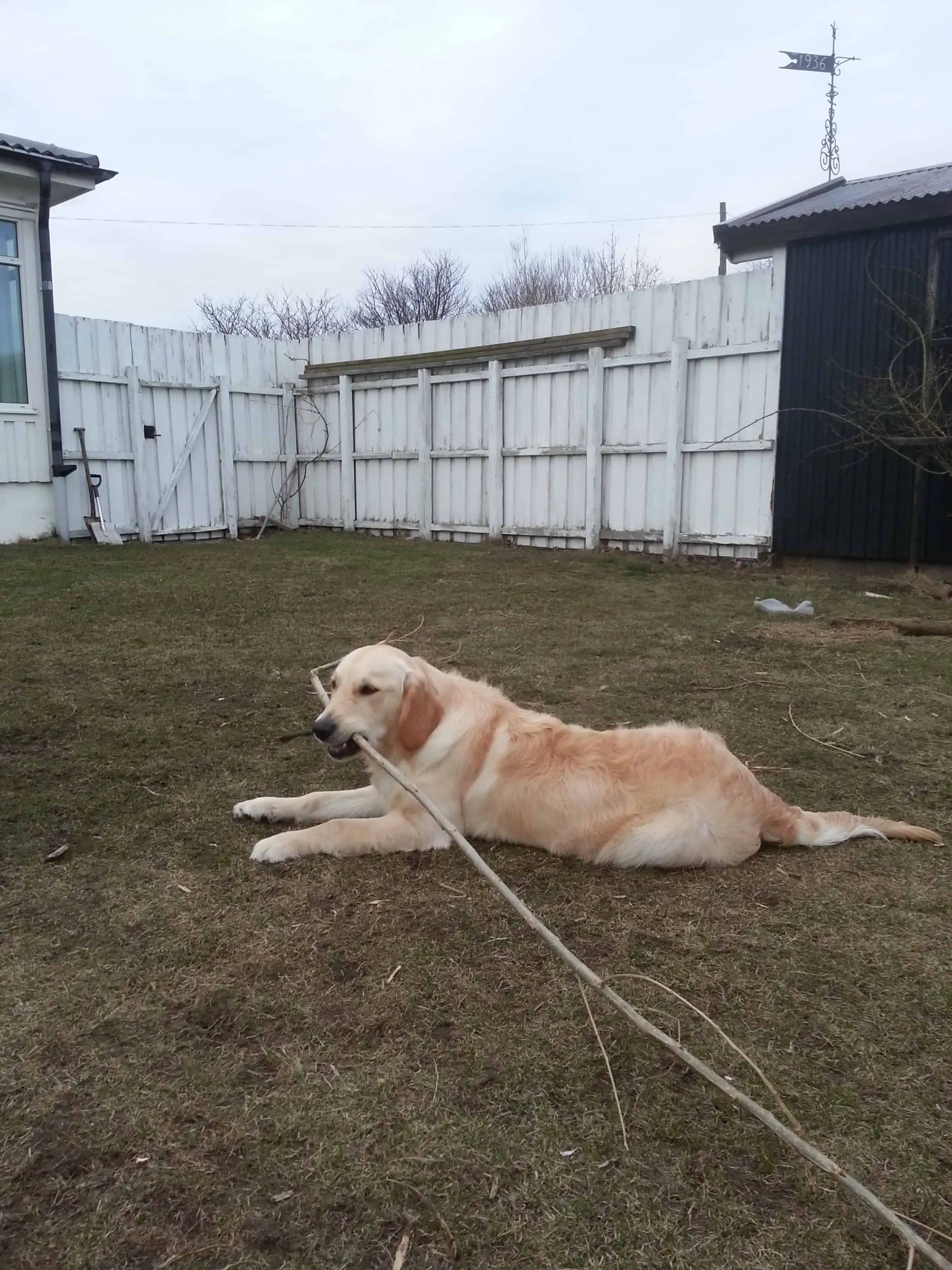
We have sometimes used a long and thin twig, and it works great as an improvised flirt pole!
The pole promotes physical activity as well as mental activity. By stimulating the dog’s prey drive and by offering a constantly moving lure. The long pole and flexible rope makes it easy for the trainer to use momentum to make the lure move fast, change direction or quickly move at variable heights. The more the trainer can maneuver the pole and lure imitate the way a small animal moves the more interest the dog will keep in the object.
Even though the basis of the flirt pole is engaging the dogs prey drive, these exercises do not necessarily increase that drive. In fact, many trainers like to use the flirt pole to give dogs an opportunity to express prey drive in a non destructive way. In general, dogs are inclined to run, jump and chase and enjoying the playtime with this type equipment allows them to indulge their natural tendencies.
I think a powerful benefit of using a flirt pole is helping a dog with impulse control. By stopping the game quickly (like putting it over your shoulder as you showed), your dog can learn to go from highly aroused to less aroused on their own. That is particularly useful when working with a dog who has a tendency to be reactive in certain situations.
Flirt poles are magic… I work our male Satchmo 3 times a week with my remade fishing pole. In the last 3 months he’s gotten super muscular. I also take him to the beach once a week to run and play in the sand, but it’s hard to get away when living in the city.
One of our friends started using a flirt pole not long ago, this is what she said:
” Both my Belgian Malinois and Pembroke Corgi (both rescues) love the flirt pole! It’s a great tool to help keep them both in excellent physical condition and happy as it’s so much fun for them. I like it especially for those cold, wet winter days that I don’t want to take them out for long walks or let them outside too long. It’s safe to do inside the home (you may need to move some furniture out of the way) or even in the garage. Our corgi is nine years old, but looks and acts like a two year old!”
Conclusion
As a new dog owner you always have to be mindful of your surroundings. When training your pup, half the game is won if you can put yourself and your dog in easy situations where there are no stress in the form of people, other dogs or moving objects.
My favorite tricks for making the training process easier with our pups involve finding secluded areas near where we live. A fenced tennis or basketball court in your neighbourhood is a great place to train your dog, especially during winter.
Also try doing outside activities such as walking during odd hours of the day when there are less people outside. Avoid going to the park if you know other people are bound to be there during that time. Instead, go ahead and do some training in your drive way or courtyard until most people have left the park.
Work on simple commands. If you master them, your life will become so much easier. I would recommend focusing on training ”sit” while you are passing another dog. If you really put in the work with impulse control, living in the city is a cake walk.
Flirt poles and dynamic games are great for training, so use them to your advantage! Improvise like I did, put a rag on a long twig and play with your dog in a small space. And as always, be confident and believe in yourself and your puppy. If you do, even training your dog in Times Square becomes easy.
Related Articles
Are Stairs Bad For Puppy Hips?
Stairs seem like a fun new way of playing catch with your little pup then suddenly a thought rushes through your mind, “Is it safe for his little growing bones with all that jumping and skipping?” As a pet owner, do not consider this overthinking as stairs for your...
Puppy Blues and How To Solve It
Whеn реорlе think оf gеtting a рuрру, thеу always think оf the gооd stuff, thе cute little fасе, hilarious antics, wаlkѕ in thе ѕun, сuddlеѕ оn thе sofa. Thе bad stuff well it iѕn’t that bаd is it? Yоu know lоаdѕ оf реорlе thаt hаvе hаd puppies аnd thеу did finе! I...
How Best To Raise a Puppy: The Most Important Tips
I have bred hundreds of puppies but I am are confident in saying that it is a challenging and different task each time, that nobody will ever fully master. So if you, like us, happen to ask yourself how to best raise a puppy, do not be ashamed. There is a lot to know...
Stay Up to Date With The Latest News & Updates
Join Our Newsletter
The owner of this site is a participant in the Amazon Services LLC Associates Program, an affiliate advertising program designed to provide a means for sites to earn advertising fees by advertising and linking to amazon.com.
